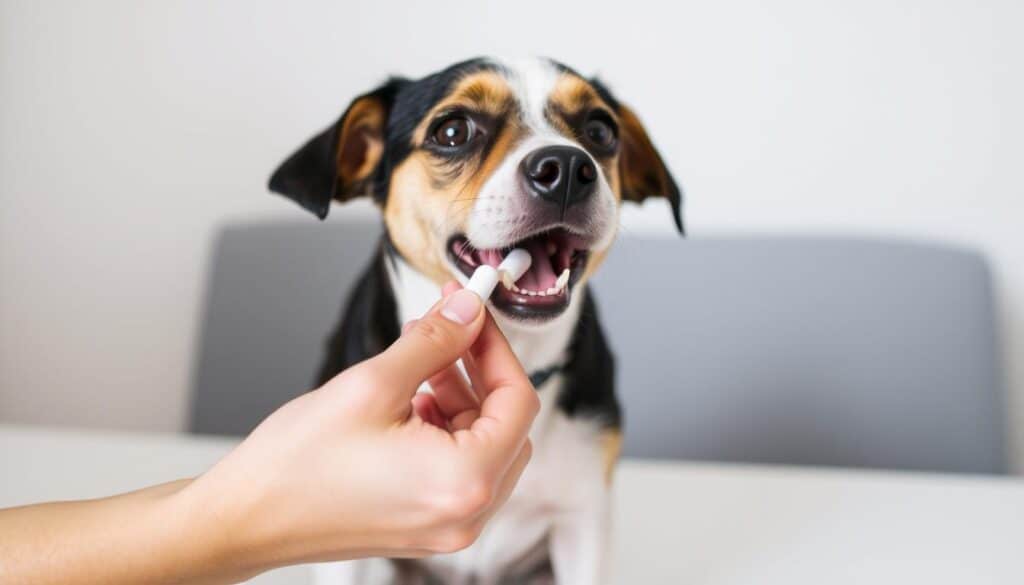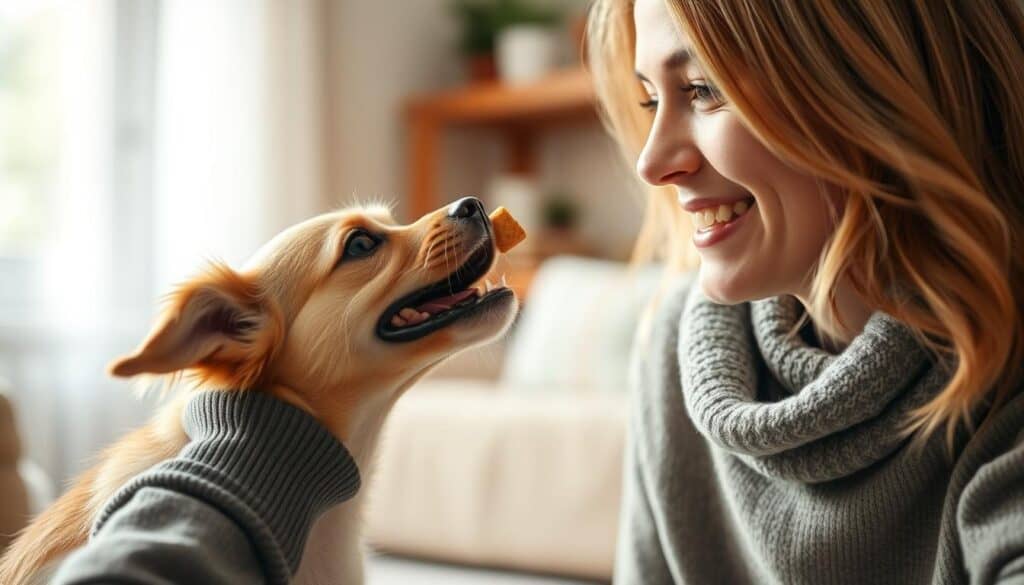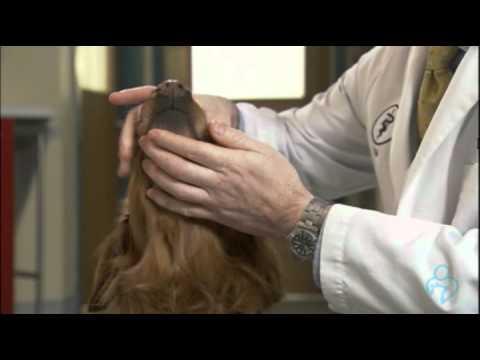It can be tough to give medication to a small dog. Their size and sometimes stubborn nature make it a challenge. This article offers practical tips and methods to help small dogs get their medication easily. It’s important to understand the role of small dog medication for their health and wellbeing.
Key Takeaways
- Administering pills to small dogs can be challenging but is essential for their health.
- Understanding your dog’s comfort level can help in the administration process.
- Timing medication administration can make the process smoother for both the pet and the owner.
- Hiding pills in food is a common method that can be effective.
- Positive reinforcement can make taking medication a more pleasant experience.
Understanding the Importance of Medication for Small Dogs
Keeping small dogs healthy often depends on the right medication. These dogs can get sick with things like diabetes and heart disease. Medication helps manage these conditions, improving their life quality.
Without treatment, health problems can get worse fast. This can hurt a pet’s well-being a lot. Medication is key in keeping pets healthy and helping them get better.
Being a pet owner is not just about feeding and playing with your dog. It’s also about giving them the right medicine. This keeps them happy and full of life. A healthy pet makes a better friend for both of you.
How to Give a Small Dog a Pill
Understanding your small dog’s comfort is key when giving them a pill. A calm dog makes the process easier. Watch for signs of anxiety or discomfort. These can tell you it’s not the best time.
Assessing Your Dog’s Comfort Level
Check your dog’s comfort before giving them a pill. Look for a relaxed posture and a wagging tail. Soft eyes are a good sign too.
If your dog is stressed, like panting or trying to get away, wait. You want to keep them calm for an easier pill-giving time.
Choosing the Right Time for Administration
When you give your dog a pill matters a lot. Pick a calm moment when they’re relaxed. Many owners find success in a daily routine.
This routine helps reduce anxiety for both you and your dog. A quiet, distraction-free space makes the experience better.
Methods for Giving Pills to Small Dogs
It can be tough to give pills to small dogs. But, there are good ways to make it easier for both the dog and the owner. There are many methods to help dogs take their medicine without stress.
Using Food to Hide the Pill
One common method is hiding pills in food. Peanut butter or cream cheese works well because dogs love their taste. But, make sure the food doesn’t mess with the medicine’s effect. This way, the medicine works right and the dog enjoys the process.
Direct Administration Techniques
Directly putting the pill in the dog’s mouth is another good way. Open the dog’s mouth and put the pill at the back of the tongue. This makes swallowing easier. Keeping the dog calm is key to success. With time, this method can be quick and easy.
How to Give a Small Dog a Pill Without Food
It can be tough to give a small dog a pill without food. But, there are ways to make it easier. Using special tools and methods can help a lot.
Using a Pill Popper Tool
The pill popper tool is a great choice for pet owners. It helps give medication easily and without stress. You put the pill in the tool and gently put it in the dog’s mouth.
This way, the pill goes down smoothly. It’s good for dogs that don’t like taking pills the usual way.
Strategies for Disguising the Pill
Disguising pills can be a clever trick. You can mix the pill with something tasty like gravy or peanut butter. This might make the dog want to eat it.
There are also flavored capsules that hide the pill’s taste. These ideas help make giving pills easier and less stressful for both you and your dog.

How to Give a Small Dog a Big Pill
It can be tough to give a big pill to a small dog. Knowing the right ways can make it easier and less stressful for everyone. Many people worry about how to give a big pill to their small dog. They also worry about breaking pills and keeping their dog calm.
Breaking Down Large Pills: What You Need to Know
Breaking pills into smaller pieces might help with giving big meds to small dogs. But, it’s key to talk to a vet first. They can make sure the pill works right and is safe for your dog. Some pills have special coatings or are made to release slowly. Always check with a vet before changing anything.
Preparing for a Calm Experience
It’s important to make a calm space for giving meds. Using calming methods can help your dog feel less stressed. Choose a quiet area with few distractions. Let your dog relax first, maybe with a play or a favorite toy.
Being patient and positive helps a lot. It makes the experience better for both you and your dog.
Overcoming Resistance: Tips and Tricks
Dealing with pets that resist medication is common. For small dogs, it’s important to be gentle yet firm. Using positive reinforcement and a regular routine can help a lot.
Positive Reinforcement Techniques
Positive reinforcement can make dogs more willing to take their meds. Giving treats or praise after they swallow the pill helps. This builds trust and makes future times easier.
Creating a Routine for Medication Time
Having a set time for meds helps reduce anxiety in small dogs. It makes them feel secure and in control. When meds fit into daily life, dogs are less stressed. This routine builds trust and makes the process better for everyone.

Handling Special Cases
Giving medication to small dogs can be tricky, even more so for anxious ones. It’s important to handle these situations with care and understanding. Making a calm space is key, as it helps the dog take the medicine without getting stressed.
Pills for Nervous or Anxious Dogs
For dogs that get anxious, using pheromone sprays or calming music can help. These methods make the environment peaceful, which reduces the dog’s stress. To ease fear, you can let the dog sniff the pill or give it with a favorite treat. This way, the dog learns to associate the pill with something good.
Consulting with a Veterinarian for Assistance
Getting help from a vet is a smart move for anxious dogs. A vet can give advice on how to give medicine safely, based on the dog’s needs. They might suggest special meds or ways to calm the dog during this time. You can also find support in online forums and from other pet owners who’ve gone through similar things.
After Medication Care
After giving a pill to a small dog, it’s key to watch them closely. Look for any signs of trouble, like changes in how they act or eat. Make sure they’re comfortable and drinking enough water.
Showing them love and praise helps a lot. When they take their medicine well, it builds trust. This makes giving them pills easier next time.
Keeping a record of when and how much medicine they get is smart. It helps you keep an eye on their health. This way, you can spot any issues early and make changes if needed.




